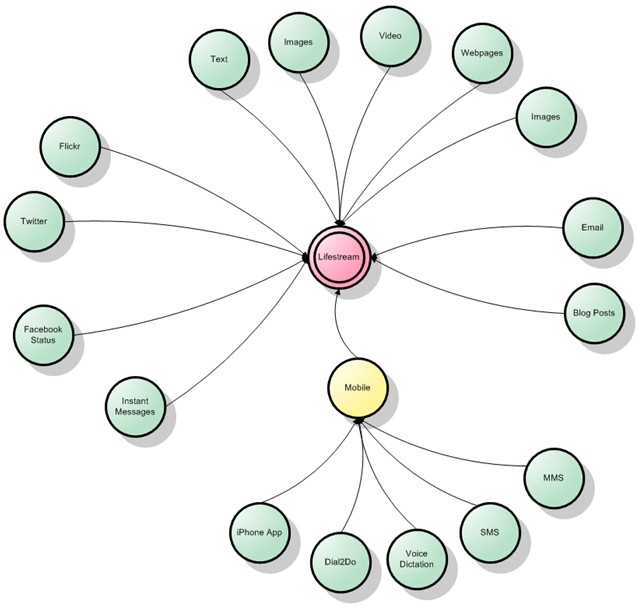I’m pleased to say that my proposed presentation for UX Australia 09 has been accepted. It looks like this is going to be an exciting conference and I look forward to making my maiden trip to Canberra. The speaker lineup looks great and good to see fellow NDM UX USiT team members Patrick Kennedy and Stephen Cox also made the cut.
The abstract has yet to be posted to the UX Australia 09 site, but here is my preliminary description
Introduction
The talk will explain what the ‘new ethnographer’s toolkit’ is, and how it can be used to reconstruct user behaviour and thus enable better-informed design decisions.
A great user experience is grounded in the insights gained from understanding users’ needs, behaviours and motivations. One powerful way of gaining this insight is by simply observing users in their natural environment, often over a long period utilizing ethnographic research.
However, this isn’t always possible due to factors such as a lack of time or resources. In these circumstances, a good alternative is to use a Cultural Probe. A Cultural Probe often simply takes the form of a paper diary that the participant uses daily to record their thoughts.
In this talk, Christopher Khalil of News Digital Media (NDM) will explain how NDM are using an innovative web/mobile-based approach to Cultural Probes (digital scrapbooks) and other research tools, utilising an array of low-cost and freely available web and mobile applications such as Twitter, Tumblr, Facebook and Dial2Do. He’ll step through a specific case study based on one of Australia’s largest transactional websites, taking the audience through some of the lessons learnt and giving examples of some of the actual digital scrapbooks generated. Advice will be offered on how to analyse and mine such rich information resources.
Full Abstract
Digital cultural probes give participants the platform with which to capture events in their lifestream whilst they happen and also offer a self-reporting diary/blog tool. (Instead of the traditional, more asynchronous method of filling out a paper diary at the end of the day) This ‘as live’ capture ensures a more realistic, natural record of the participant’s life than asking them to fill out a diary entry alone. Furthermore, it closely connects the researcher to the participant since the researcher can also monitor updates to the probe as they happen. Having a digital-only record also facilitates easier analysis, versioning and distribution
An example of this type of study might start with the researcher recruiting a participant straight from the site they are working on (using Ethnio). The participant is then issued with a login to a Tumblr and is asked to use this to record anything they find interesting on the web during the following week.
A special property of Tumblr is that it offers a very simple mechanism for the user to capture videos, emails, images, text, audio and IM conversations as they engage in their normal online behaviour. It also facilitates simple aggregation allowing Tumblr to integrate other feeds such as their Twitter or Flickr streams. The participant can then, optionally, add commentary around any of the items they log or posts they make. In this way, the researcher is capturing the participant’s digital fingerprints in the form of a digital scrapbook or diary.
Away from recording their online life, the participant can capture events on their mobile phone via voice recordings, SMS, MMS or email. These are all sent to the single Tumblr, giving the researcher an unprecedentedly rich tapestry of contextual, in situ information about the participant. NDM are using this knowledge to improve the user experience around several major online presences. Christopher will take the audience through real-life case studies, making available some of these digital scrapbooks and illustrating how powerful their use is, and offering advice on how to analyse and mine such rich resources

digital ethnographers toolkit
Background
Paper or Video diaries and other traditional forms of Cultural Probe are not ideal because they are primarily asynchronous (from real life) and self-referential (i.e. I talk about my day through a frame I think is essential). For example, in a traditional probe, the participant would go about their everyday life and then at the end of the day, reflect back on the significant events that have taken place. The issue with this is that the minutiae and richness of the everyday (despite being potentially significant) is often lost in the edited and processed view the participant takes in their diary entry.
In this talk, we look at ways technology can help capture many of these moments, recording events in the participant’s lifestream as they happen using mobile and web applications. In other words, we are capturing their digital fingerprints. The advantage of this approach is that the recording mechanism is often in the same medium and context the researcher is trying to find out more about (the web).
These tools allow the participants to quickly capture videos/photos/text snippets/instant message conversations/emails/audio etc, they have found interesting and put some commentary around them. This lifestream data can then be used as a moodboard/scrapbook, giving the participant the ability at the end of the day to look back on what they have recorded and make sense of it.
Since many researchers don’t have the time or money to setup bespoke solutions or understand technical details, this study focuses on products which are mainly free or inexpensive and which can be easily configured and setup by even the less technologically savvy researchers.



Recent Comments